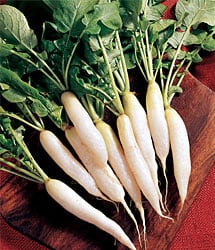The Winged bean (Psophocarpus tetragonolobus), also known as the Goa bean and Asparagus Pea andWinged Pea (Lotus tetragonolobus), is a tropicallegume plant native to New Guinea. It grows abundantly in hot, humid equatorial countries, from the Philippines andIndonesia to India, Burma, Thailand and Sri Lanka. It does well in humid tropics with high rainfall. There are also varieties that can be grown in most areas of the U.S..
The winged bean plant grows as a vine with climbing stems and leaves, 3–4 m in height. It is an herbaceousperennial, but can be grown as an annual. It is generally taller and notably larger than the Common bean. The bean pod is typically 15–22 cm (6–9 in) long and has four wings with frilly edges running lengthwise. The skin is waxy and the flesh partially translucent in the young pods. When the pod is fully ripe, it turns an ash-brown color and splits open to release the seeds. The large flower is a pale blue. The beans themselves are similar to soybeans in both use and nutritional content (being 29.8% to 39% protein).
The plant is one of the best nitrogen fixers with nodulation accomplished by the soil bacteriumRhizobium. Because of its ability to fixnitrogen from the atmosphere, the plant requires very little or no fertilizers.
The plant produces pea-like beans with four winged edges. Almost every part of this unique plant is tasty and edible. The fresh young pods are similar to green beans with a chewy texture and a slightly sweet taste. When cooked, the leaves taste like spinach and the flowers like mushrooms. The firm-fleshed roots have a nutty flavor. This remarkable bean could become one of the most important crops for underdeveloped countries, because it offers a high source of protein.
Winged bean is a tropical plant and grows vigorously in warm climates. However, this plant does not produce beans well during the long day season, but will bear/produce lots of beans when a shorter day season arrives in late summer and fall. Therefore it is suggested to consider this day length situation in planning your planting/growing time for obtaining the best results.
Health Benefits of Winged Bean
- Winged beans have the highest calcium content among all legumes and as such, are very beneficial for the human skeletal system. The calcium present in these beans helps in the production and maintenance of the bones and provides strength to overcome diseases and weaknesses.
- Winged beans are also a good source of natural minerals, vitamins (especially A and C), iron and enzymes.
- As a legume, wing bean scores high on protein content. In other words, it proves to be a good source of protein for humans as well as animals.

